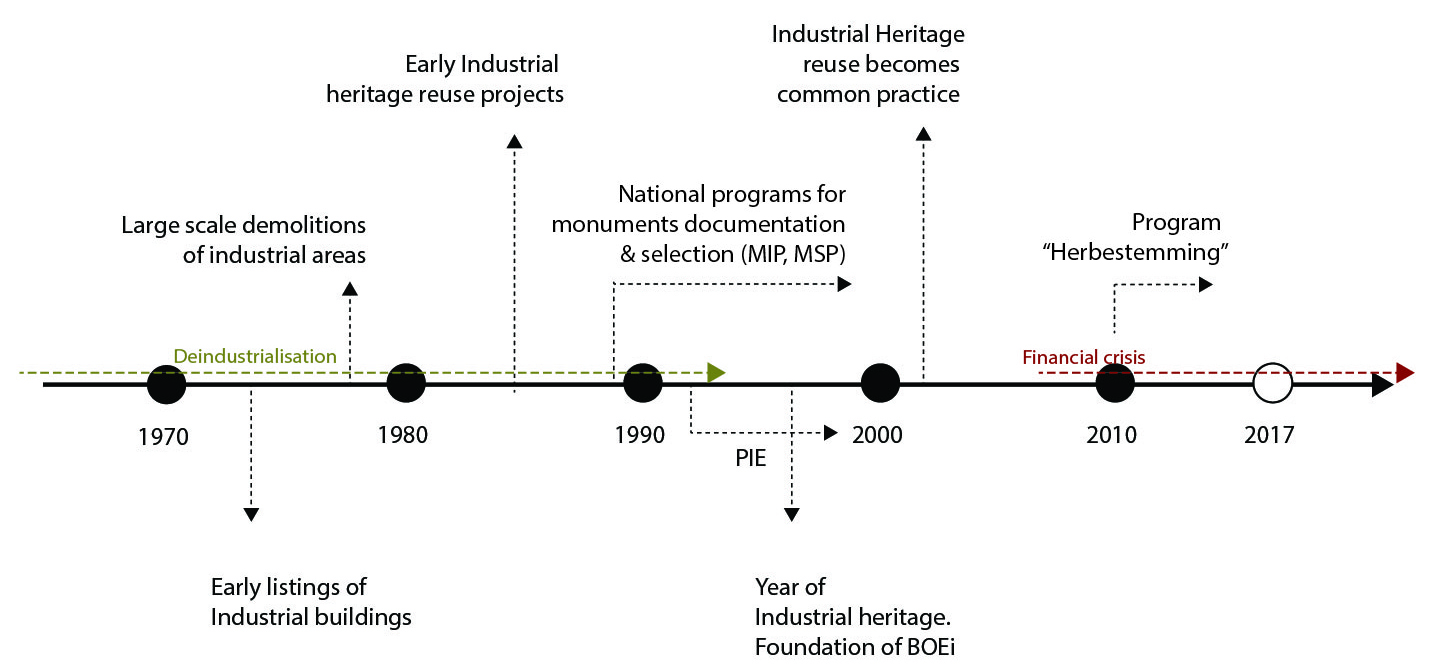Netherlands

The protection and reuse of the Dutch industrial heritage came with a relative delay in comparison to the large European industrial nations. In specific, interest for the relics of industry in the Netherlands was expressed for the first time the 1970's (1). However, until the late 1980's the obsolete industrial stock was mainly perceived as an inferior group by the official governmental bodies, due to its aesthetics and the lack of understanding and appreciation of the historical industrial production (2). The attitude of the public at the time, was in general in line with the government’s. As a result, until the late 1980s industrial heritage reuse was only a rare practice in the country. Limited examples involved mainly transformations into industrial museums.
The first systematic attempt to document industrial monuments, among other sites, was the National Monuments Inventory Program (MIP), which took place from 1986 until 1995. The MIP was followed by the Monuments Selection Project (MSP), aiming at the selection of the sites and buildings of national value which would be protected by the Dutch Monuments Act. The 1990s saw an important shift in favour of the Dutch industrial heritage protection and reuse. The posed shift can be ascribed to: the foundation of key organisations, such as the PIE (3) and BOEI (4), initiatives like the ‘Year of Industrial heritage’, promoting the significance of the heritage group to the public, as well as the transformation of certain complexes which highlighted the multi-phase potential of such sites.
Since the late 1990s, the value of industrial heritage has been widely recognized and many sites have acquired a protected monument status. Industrial heritage reuse, gaining some momentum in the 1990s, has become common practice in the decades that followed. During the last decade, heritage reuse is encouraged by the Dutch government through policy (5) and national programs such as the “Herbestemming”(6). Undoubtedly the recent financial crisis has had a significant impact to the protection and reuse of industrial heritage, posing new challenges to both industrial relics and the reused industrial sites.
Literature
- Karel Loef, Industrieel Erfgoed van buitenbeentje binnen de monumentenzorg naar boegbeeld van de erfgoedzorg (Leiden 2013, 23).
- Peter Nijhof, ‘Industrial heritage in the Netherlands; the watertowers.’ in Architectural Heritage: Inventory and Documentation Methods in Europe (Nantes 1992, 113-117).
- PIE, the Netherlands’ Institute of Industrial heritage operated from 1992 to 1997. Its aim was the close examination of the industrial building stock and its promotion as a cultural asset.
- BOEi, the Nationale Maatschappij tot Behoud, Ontwikkeling en Exploitatie van Industrieel erfgoed, founded in 1996, is an organization that remains active up to this day, focusing on the acquisition, restoration and exploitation of former industrial sites. Recently, BOEi’s scope has been broadened to more heritage groups. http://www.boei.nl/ (accessed 23 April 2017).
- http://www.cultureelerfgoed.nl/en/modernising-heritage-management, (accessed 13 April 2016).
- https://www.herbestemming.nu/projecten?f[0]=heritage_status%3A75 (accessed 23 June 2017).